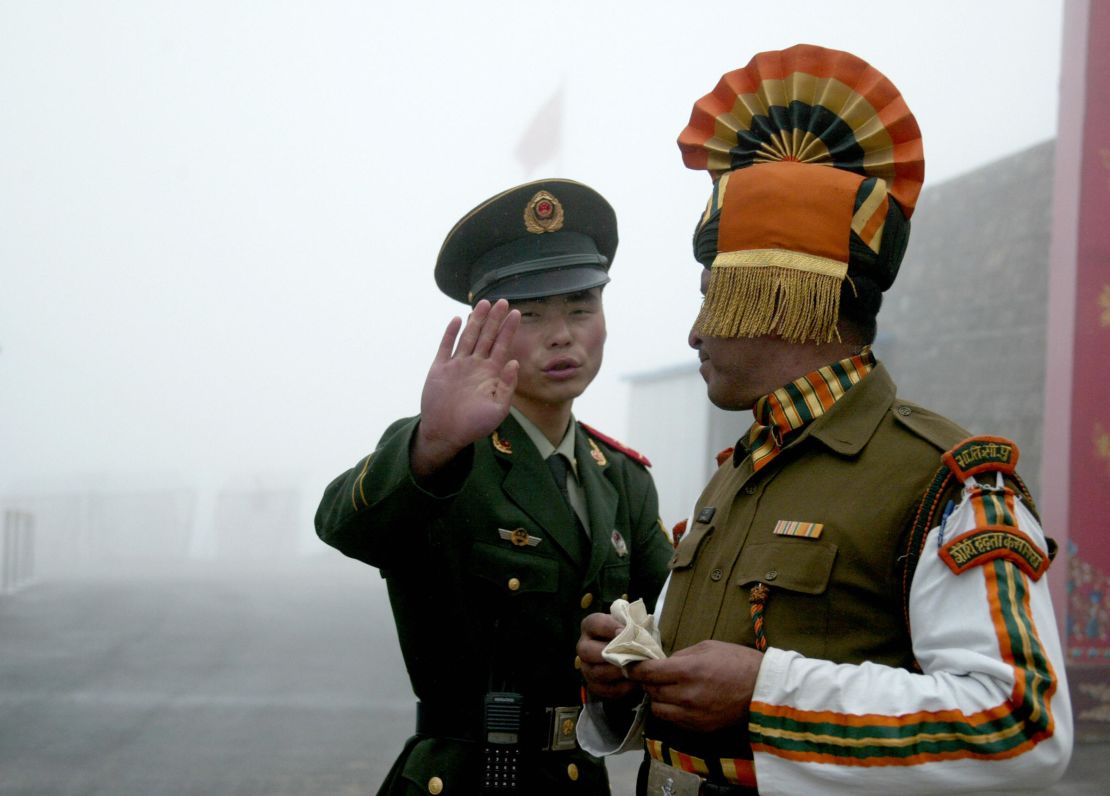Story highlights
Dispute is over territory in the Himalayas
Had brought back memories of a deadly 1962 border conflict between India and China
India and China have agreed to deescalate a months-long territorial standoff in the Himalayas, ahead of a major economic summit involving both countries.
In a statement Monday, India’s Ministry of External Affairs said the “expeditious disengagement of border personnel at the face-off site at Doklam has been agreed to and is ongoing.”
China’s official Xinhua news agency said India had withdrawn its personnel and equipment “that had crossed the border back to the Indian side.”
“Chinese personnel verified this at the scene,” Xinhua reported. “China will continue to exercise its sovereign rights and preserve its territorial sovereignty in accordance with historical border agreements.”
Indian Prime Minister Narendra Modi and Chinese President Xi Jinping are expected to meet at the BRICS summit – alongside leaders from Brazil, Russia and South Africa – in the southern Chinese city of Xiamen later this week.
Diplomacy at work
The standoff between India and China, the two largest BRICS economies, comes as Beijing seeks to expand the five nation grouping to include other emerging nations, many of which are seen as sympathetic to China’s interests, according to Sudheendra Kulkarni, chairman of the Observer Research Foundation Mumbai.
China has invited the leaders of Thailand, Indonesia, Kazakhstan, Egypt and several other nations to the Xiamen conference.
But the quick deescalation of the situation ahead of the summit shows that Modi has withstood Chinese pressure and forced Beijing to back down, said Manoj Joshi, a fellow at the Observer Research Foundation in Delhi.
The summit will provide a good opportunity to solve the two sides’ differences, he said, “provided the two sides understand that the time for posturing is over and diplomacy should be allowed to work.”
Dhruva Jaishankar, an analyst at Brookings India, said Monday’s announcement was a positive sign that “despite differences both sides can resolve their concerns about each other peacefully and through diplomatic channels.”
But Dan Wang, China analyst at the Economic Intelligence Unit, warned the “risk of both sides getting back to military standoff is not eliminated.”
“We are likely to see more spats and conflicts between China and India,” she said, adding that while outright conflict was unlikely, both countries may seek to punish each other economically by placing restrictions on Chinese and Indian firms accessing their respective markets.
Tense stand-off
The Doklam dispute began in July, over a thin strip of land bordering both countries and Bhutan, in the Himalayas. Though not a part of Indian territory, the area is close to the “chicken’s neck,” a strategic corridor that serves as a vital artery between Delhi and its far northeastern states.
The stand-off was sparked after Bhutan accused China of constructing a road inside its territory in “direct violation” of treaty obligations. China, which does not have formal diplomatic relations with Bhutan, denied the accusation, contending that Doklam is part of Chinese territory.
India and Bhutan have maintained historically strong relations. Bhutan co-operates closely with India in determining its foreign policy, and the Indian Army is involved in the training of its armed forces.
Beijing accused India of sending troops into Bhutan, further escalating the dispute. In the weeks since, both countries had upped their military presence in the region, China engaged in live fire drills near the border, and a war of words erupted, culminating in a racist video published last month by China’s official Xinhua news agency in which a Chinese actor wearing a turban and fake beard mocked Delhi for “shooting itself in the foot.”

Long-running tension
The Doklam dispute is the latest in a long-running series of territorial flare-ups between India and China. In 1962, the two countries engaged in a bloody border war, and skirmishes have continued to break out sporadically in the decades since.
Bhutan quick facts
On June 26, China accused Indian border guards in the state of Sikkim of crossing into its territory in southwestern Tibet, in an attempt to obstruct the construction of a new mountain road.
India has not denied its troops were present in the area. According to a statement released by the Indian Ministry of Foreign Affairs, Indian personnel “approached the Chinese construction party and urged them to desist from changing the status quo.”
In response, China blocked religious pilgrims from India from visiting the Manasarovar shrine, accessible only via the Himalayan Nathu La that runs alongside the border between the two nations, “out of security concerns.”
The moves come at a time of steadily deteriorating ties between the two countries, say analysts, who point to Chinese investment in Pakistan-administered Kashmir, and Chinese frustration with India’s unwillingness to join its One Belt One Road (OBOR) development initiative as points of contention.
CNN’s Ravi Agrawal, Steven Jiang and Steve George contributed reporting.




